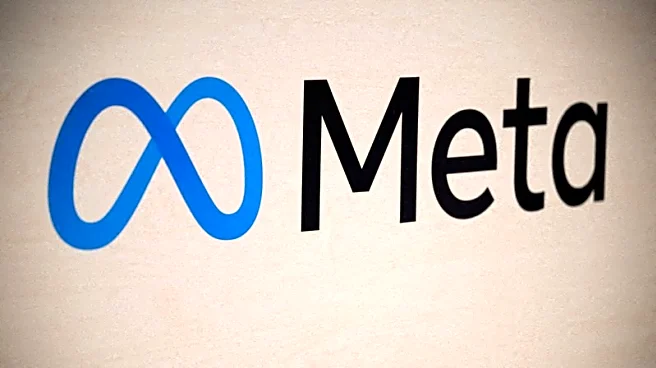What is the story about?
What's Happening?
Intel has experienced a significant resurgence in its stock value, nearly doubling since its 2025 lows, driven by strategic investments and a renewed focus on its Intel Foundry Services (IFS) initiative. The company is actively pursuing partnerships to manufacture chips for other industry players, including a potential deal with Advanced Micro Devices (AMD). This shift is part of Intel's IDM 2.0 strategy, aiming to regain process technology leadership and establish IFS as a major player in contract manufacturing. The initiative has attracted substantial investments, including $8.9 billion to $11.1 billion from the U.S. government through the CHIPS Act, and a $5 billion investment from Nvidia, which acquired a 4% stake in Intel. The leadership transition to Lip-Bu Tan as CEO has further bolstered optimism about Intel's future prospects.
Why It's Important?
Intel's aggressive push into foundry services represents a potential shift in the semiconductor industry, offering new manufacturing options for companies like AMD and Nvidia. This diversification could reduce reliance on Taiwan Semiconductor Manufacturing Company (TSMC), enhancing negotiation power and reducing geopolitical risks. Intel's resurgence is supported by government incentives aimed at bolstering domestic chip production, aligning with broader industry trends towards supply chain resilience. The success of Intel's foundry initiative could reshape the competitive landscape, challenging established players like TSMC and Samsung, and potentially accelerating technological innovation through increased competition.
What's Next?
Intel's future hinges on the successful execution of its foundry strategy, particularly securing manufacturing contracts with high-volume clients like AMD. The ramp-up of its 18A process node and subsequent 14A process will be crucial for attracting and retaining customers. Intel must overcome financial challenges, including net losses and negative free cash flow, to demonstrate sustainable growth. The market will closely watch upcoming earnings reports and customer engagements as indicators of Intel's trajectory. Long-term success could position Intel as a leading chip designer and foundry, enabling strategic pivots and expanding market opportunities in sectors like AI.
Beyond the Headlines
Intel's foundry ambitions align with global trends towards supply chain diversification, driven by geopolitical tensions and pandemic-induced shortages. The CHIPS Act funding supports domestic semiconductor manufacturing, potentially setting a precedent for similar policies worldwide. Intel's strategy marks a departure from the fabless-foundry model, integrating design and manufacturing to redefine competitive dynamics. This move could lead to faster technological advancements and more competitive pricing, benefiting fabless companies and enhancing collaboration opportunities for partners like Nvidia, Microsoft, and Amazon.
AI Generated Content
Do you find this article useful?















